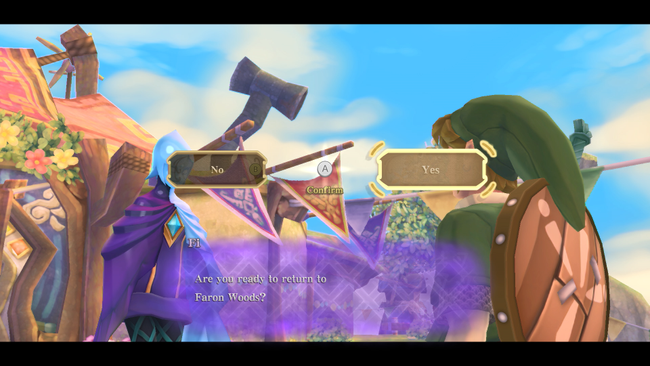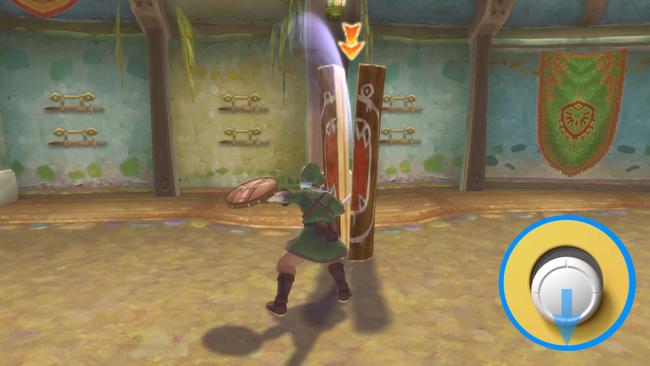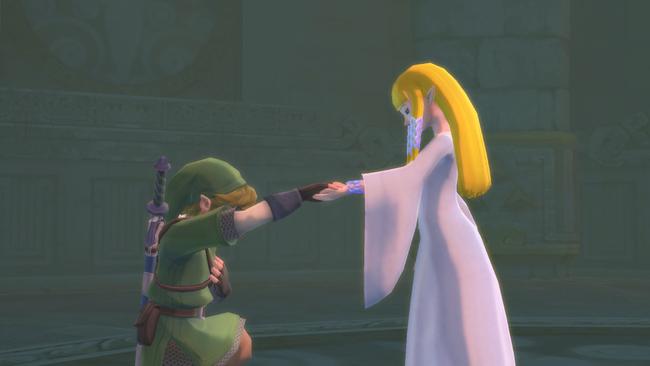The Legend of Zelda: Skyward Sword Review
The Legend of Zelda: Skyward Sword might be one of the most divisive Zelda games. Its legacy began when it was unveiled at E3 2010, and Shigeru Miyamoto came out on stage to demonstrate the game. Skyward Sword was one of the few Wii titles to fully utilize the Wii's MotionPlus accessory, which was meant to read the Wii Remote's movements perfectly. Unfortunately, Miyamoto ran into trouble getting the game to read his movements, which led to an incredibly awkward stage demo. Even if you were a believer in the Wii's motion controls, that demo might have given you pause. Add it onto the fact that this was the next mainline entry in the Zelda franchise, fans were wary of how good the game could be. Lost over the debate of motion controls is the game itself: The story, the characters, the design. How does Skyward Sword fare as a whole?
Thousands of years before the start of the game, the land was embroiled in war between the gods. In an effort to spare humans from the conflict, the goddess Hylia gathered some and sent an outcropping of land far into the sky. In the present time, the conflict on the surface has passed into legend and the humans now live peaceful lives among the clouds. Link has just passed his exam that makes him into a full-fledged knight. After going out for a flight on his Loftwing bird companion along with his childhood friend Zelda, she is suddenly sucked into a vortex and Link is knocked unconscious from the blast. Link is then visited by Fi, a spirit who tells him it is his destiny to travel down to the surface to save the land.

Let's get the elephant in the room out of the way first: the motion control issue. Since the Nintendo Switch Lite exists, and Nintendo wasn't going to alienate players by making it impossible to play the game, there are now standard controls available for Skyward Sword HD. In this new control scheme, the right analog stick controls the sword and all of the actions you need to do with it. Attacking requires flicking the analog stick in the direction you want to swing.
It took me a while to get used to this and, to be honest, I'm not sure how much better this is over using motion controls. If you have drifting Joy-Cons, combat might prove to be a slight issue. I'm sure many people would have preferred the buttons to attack, but this would never have been possible due to the way Skyward Sword's combat is structured. Flying on your Loftwing is easier using standard controls over motion, so there's one aspect that I think works much better for sure.
Controlling the camera is also more awkward using standard controls. Since the right analog stick is mapped to the sword, and the left is obviously for moving, that means a button is going to be required. The ZL button centers your camera, or you can free cam by holding L and using the right stick. Using the free cam in combat is basically impossible, since you'll probably want to fight back using the right stick for your sword. I stuck mostly to using motion controls when I was playing, but playing on your TV is a requirement if you're going to use motion controls. I tried to use motion controls while my Switch was undocked, and it wasn't fun at all. I needed to realign my Joy-Cons a lot, as the small size of the Switch means any exaggerated movements knock the controls out of sync.

When it comes to the Zelda series, Skyward Sword has always had my favourite story and cast of characters. While you don't get a great sidekick like Twilight Princess's Midna, or Majora's Mask's amazing breadth of NPCs, the story of Skyward Sword tells you an easy-to-follow tale and provides the background needed to set up the rest of the games in the franchise. Skyward Sword is the origin story of the Zelda series, explaining how the events in all of the games are tied to what happens in Skyward Sword.
As such, narrative elements play a much larger role in Skyward Sword than it does in any other Zelda game. Some players might prefer a less hands-on approach to the story, but for me, it helps to have the direction. It's the most focused story in the series, and it shines as a result. Skyward Sword also features one of my favourite Zelda side characters in Groose. Initially starting out as Link's rival, he eventually befriends Link and assists him on his journey. The character growth of Groose throughout the story is amazing, and his arc of the story is why he's among one of my favourite characters in the series.
Skyward Sword also has my favourite iteration of Zelda in franchise history. In the opening hour, you're introduced to a completely new personality for Zelda, as she flirts and teases Link. She's not constrained by loyalty to her kingdom like in previous games. She's a normal girl like everyone else, but she takes on her fated duties without complaint. Link is the one playing catch up with Zelda in this version of the game, following in her footsteps. Contrast this to Breath of the Wild, which was the next mainline Zelda game after Skyward Sword. In a lot of ways, Breath of the Wild learned from Skyward Sword, either changing parts of the game players had issues with or retaining certain elements.

Going from Breath of the Wild's Divine Beasts back to Skyward Sword's dungeons is a huge breath of fresh air. Breath of the Wild has some of the series' worst dungeons, while Skyward Sword has some of the best. Some of the puzzles were creative, not just in utilizing the motion controls but also in their mechanical design. In addition to the usual elemental theme of each dungeon, the dungeons are also integrated organically into the world. Each dungeon simply feels like another section of their area instead of being separated 'temples' in the traditional sense. It makes the world feel more alive and untamed, which helps sell the idea that this really is the beginning of the series chronologically.
One much appreciated element that is included in this port of Skyward Sword is an upgrade to 60 frames per second. The increased frame rate helps everything run smoother, and is a welcome improvement. Tutorials have also been reduced, and Fi's constant recommendations are now relegated to being optional with the press of a button. Skyward Sword's pace has really improved with these changes, and I'm sure fans of the game will appreciate it.

The upgrade to HD doesn't seem to have changed all that much about the graphics. While you could argue that's a detriment, I think it speaks volumes about the game's original art style. It stood the test of time. The only issue I have with the art style are the character's faces, and I've never been a huge fan of Skyward Sword's character models. That being said, it's a minor issue in the grand scheme of the game itself.
For any fans of the original game, or anyone who wants to experience The Legend of Zelda: Skyward Sword for the first time, should pick up this remaster. Given its high price point for a remaster, anyone on the fence should either wait, or ignore the game altogether. The quality of life changes are greatly appreciated, but they are not going to change anyone's long standing opinions on the game, besides perhaps criticisms about the motion controls.